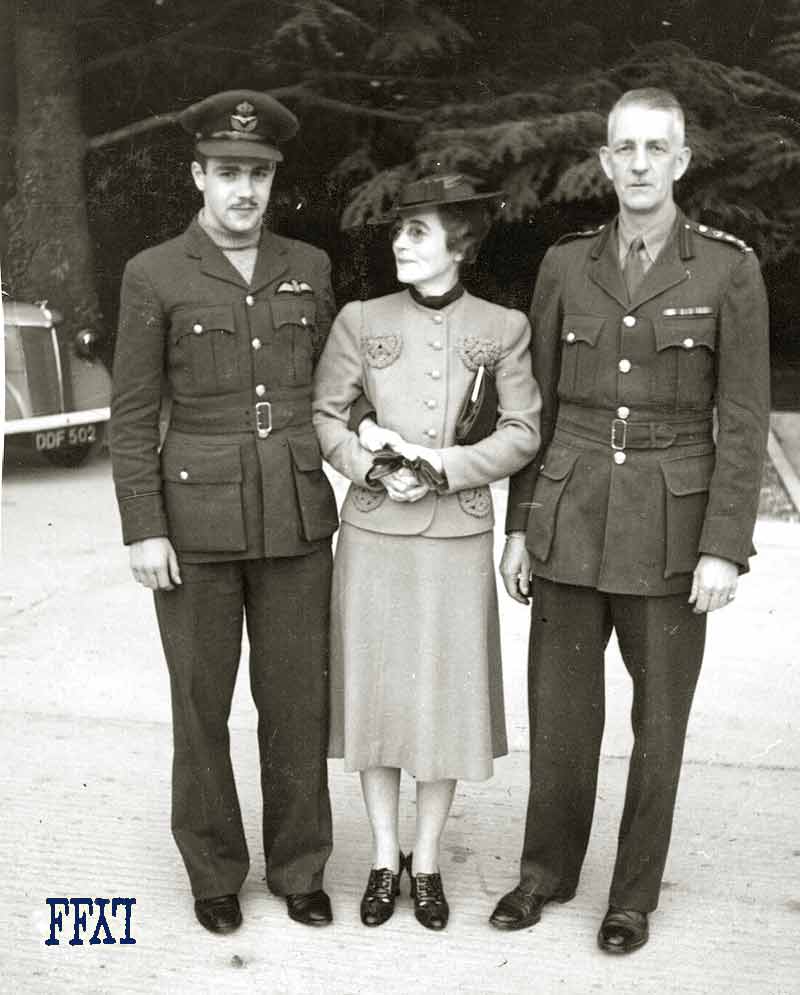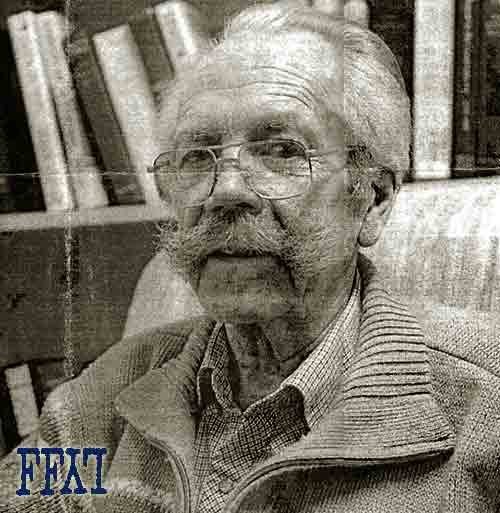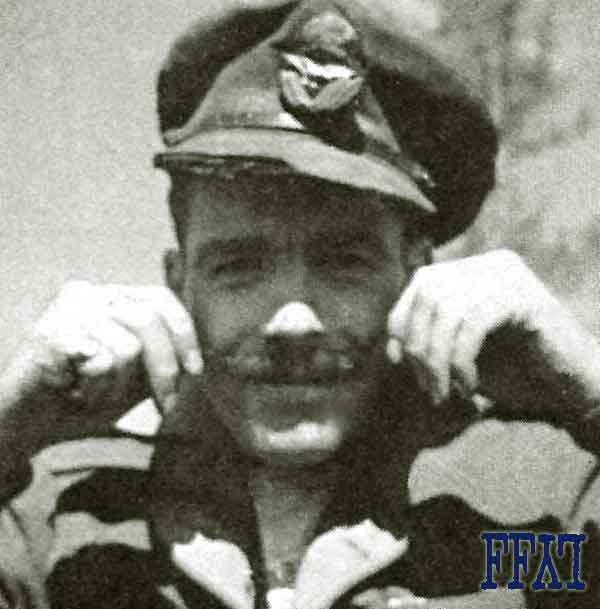|
--------------------------------------------------
The following is taken from a catalogue of Jeffrey Hoare Auctions (25 April 1992), describing his victory of 25 June 1941 and subsequent operations:
He took off at 1150 hours, one of twelve Spitfires of No.145 Squadron taking part in Circus 22. The Spits crossed the coast at Dover, then orbited the French coast in the Gravelines area, and proceeded to St. Omer. At that point four ME.109s were seen with more above, but these Germans stayed at bay and the Spitfires came back without engaging. It was only a prelude. The same afternoon another Circus operation took place, [Stan] Turner and his pilots took off from Merston at 1547 hours, and met the other escorting fighters, No.601 and 616 Squadrons, over Westhampnett. The whole formation of bombers and fighters then crossed the French coast at Le Touquet, No.145 flying top cover at 23,000 feet. At that point, the CO decided to dive a bit to pick up speed, and while doing so, some 109s were spotted below. The Spits started to orbit, but these enemy aircraft eventually disappeared and the boys resumed patrol. A few minutes later, they spotted eight more 109s in the process of attacking No.616 below, and Stan led his men down to attack the enemy aircraft which were slightly below them. The Spitfires of No.145 were in good position at that time, and dispersed the enemy aircraft quite easily, destroying two of them and damaging two more with no losses to themselves. One of the "destroyed” went to the account of Arthur. There was no doubt whatsoever about the victory as the German pilot baled out from his flaming machine. |
|
 Top: Stan Turner, John P. McKechnie (Aussie, POW) & Duke. Bottom: Hugh I. Lang (KiFA), N. Douglas Edmond (Calgary, KiFA) & Ken M. Hicks (Aussie, KIA). Lang & Edmond were killed when their Hurricanes collided 20 April 1941 (242sq.)
Top: Stan Turner, John P. McKechnie (Aussie, POW) & Duke. Bottom: Hugh I. Lang (KiFA), N. Douglas Edmond (Calgary, KiFA) & Ken M. Hicks (Aussie, KIA). Lang & Edmond were killed when their Hurricanes collided 20 April 1941 (242sq.) |
--------------------------------------------------
Born 4 June 1918, Hendon Middlesex, England
as per birth certificate registered 17 June 1918 at Hendon
Educated at Kelvin High School, Winnipeg
Goes by the name 'Ian'
To Britain aboard Athenia, 13 August 1938
Appointed Acting P/O on Probation in the RAF, 29 October 1938
Had flown 190 hours by outbreak of war
To No.141 Squadron, 10 October 1939
To No.242 Squadron, 3 December 1940 and flew 95 sorties
To No.145 Squadron, 23 May 1941
To Central Flying School, Upavon, 18 October 1941
Instructor, No.5 (P) Advanced Flying Unit, Ternhill, December 1941
Instructor, No.7 (P) Advanced Flying Unit, Peterborough
To No.411 Squadron, 22 Nov. 1942 to 6 January 1943, (6 sorties)
To No.122 Squadron, January 1943
To No.81 Squadron (North Africa), March 1943
To No.242 Squadron (Flight Commander), March 1943
To No.232 Squadron (to command), 1 June 1943
Remained there until December 1943
To Aleppo, December 1943
To No.72 Squadron (as S/L), April 1944
To No.5 Refresher Flying Unit, Perugia (as W/C), November 1944
To No.239 Wing (Mustangs) as Wing Leader, July 1945
Returned to the UK in 1946, reverting to Squadron Leader
No.19 Squadron (in command), April 1946 to August 1948
Retired from the RAF, Nov. '54 & returned to Canada where he
Ran a water transport business in B.C.
Moved into the Richmond Lion's Manor retirement home in 1996
Died in Richmond, British Columbia, 16 October 1998
See Michel Lavigne's "Canadian Wing Commanders"
(“a good fighter pilot with many successes and a fine flyer
who was never shot down.”)
Flew more Ops (448 Ops in 717.5 Hrs) than any other Canadian
except Stan Turner (500 Ops) & George Keefer (468 Ops)
|
--------------------------------------------------
ARTHUR, S/L Charles Ian Rose (41241) - Distinguished
Flying Cross - No.72 Sq.
Award effective 9 June 1944 as per London Gazette of that date.
In May 1944 this officer flew the leading aircraft of
a formation which engaged a force of eighteen enemy aircraft, nine of
which were shot down without loss. By his skilful and determined leadership,
Squadron Leader Arthur played a worthy part in this brilliant success.
This officer has taken part in a very large number of sorties and has
displayed outstanding devotion to duty. He has destroyed two enemy aircraft.
Public Record Office Air 2/9156 has recommendation by G/C W.G.G. Duncan-Smith (Officer Commanding, No.324 Wing), drafted 9 May 1944 when he had flown 387 sorties (636 operational hours) of which 87 sorties had been in the previous six months. His total hours (all duties) were 1,522.
Squadron Leader Arthur has been employed on operations continually since the war began. He has flown a large number of operational hours and completed many sorties. Since taking over command of No.72 Squadron he has flown and led them with considerable success, showing keenness and determination to engage the enemy. On 7th May he was leading his squadron on an offensive patrol north of Rome when he attacked and engaged 18 Messerschmitt 109s. By his skilful leading and great determination the squadron were able to destroy nine of the enemy for no loss, himself destroying one, making this sortie a brilliant victory for us.
Squadron Leader Arthur has now destroyed at least three enemy aircraft and damaged others. I strongly recommend him for the immediate award of the Distinguished Flying Cross.
--------------------------------------------------
Canadian Airman in Command Of RAF Over Southern France
Somewhere in Corsica, Aug. 16, 1944 - (CP) - First British
aircraft over the new bridgehead in Southern France was commanded by a
Canadian in the RAF, Sqdn. Ldr. "Duke" Arthur, D.F.C., of Winnipeg,
whose parents live in Vancouver, the RCAF said tonight in a press release.
Arthur's aircraft was the leading plane in the tremendous air assault
which receded and coincided with the newest attack on Europe.
In the release, F/L L. C. Powell, RCAF Public Relations Officer, told
of a flight over the invasion area. He said:
"We could see more than 800 vessels of all sizes headed toward the
mainland. They moved under the strongest kind of air protection.
The softening-up attack had been left almost entirely to the Americans
but in the RAF Spitfire squadron that covered the assault itself there
were plenty of Canadians. They were there too, in force, as escorts of
the U.S. bombers and for strafing targets of opportunity.
". . . We saw not the slightest trace of resistance other than several
burst of heavy flak in the distance. No enemy fighters showed.
"As we wheeled away from the target the Clouds broke enough for us
to see hundreds of ships steaming in to pour troops ashore. We saw smoke
and flame belching from the warships as heavy cannon roared into action
pounding what gun defenses were left after the consistent bombing of the
last few days."
--------------------------------------------------

Duke with his parents Mabel & Lennox in England, 1940 (Lennox was a doctor in WW1)
ARTHUR, S/L Charles Ian Rose (41241) - Bar to
DFC - No.72 Squadron
Awarded as per London Gazette dated 29 December 1944.
Squadron Leader Arthur has continued to lead his squadron
with skill and determination. Since the award of the Distinguished Flying
Cross he has completed many sorties and has destroyed at least one enemy
aircraft. During the invasion of the south of France he has led his squadron
in many sorties which resulted in the destruction of 37 mechanical transport
and other vehicles and damaged many others. His coolness, determination
and outstanding leadership have largely contributed to the successes achieved
by the squadron.
NOTE: Public Records Office Air 2/9033 has recommendation
for this award dated 25 October 1944. It stated he had flown 81 operational
hours since previous award, had flown a total of 1,645 hours (145 in previous
six months) and had flown a total of 717 operational hours (437 sorties).
Text differs little from the published citation:
Squadron Leader Arthur has continued to lead his squadron
with skill and determination. Since being awarded the Distinguished Flying
Cross this officer has completed many sorties and has destroyed one enemy
aircraft and shared in the destruction of another.
During the invasion of the south of France he lead his
squadron on many sorties resulting in the destruction of some 37 mechanical
transport and other vehicles besides damaging many others. His coolness
and determination contributed largely to the success of his squadron.
Squadron Leader Arthur has now completed over 700 hours operational flying.
--------------------------------------------------
Victories Include :
25 June 1941
30 June 1941
29 June 1943
17 July 1943
12 Aug 1943
7 May 1944
16 May 1944
14 Oct 1944 |
one Me109
1/2 Me109
1/2 Me109
one Me109
one MC202
one Me109
1/2 Me109
1/6 Me410 |
destroyed
destroyed
destroyed
damaged
damaged
destroyed
destroyed
destroyed |
Le Touquet (Circus 23)
Le Touquet area, Circus [1]
Comiso
Sicily
NW of Milazzo
Lake Bracciano area
Lake Bracciano area
Bergamo area |
3.66 / 0 / 2
[1] Shared with F/O St.Pierre, RAF
--------------------------------------------------
Memories of War
(By Mike Howell News Reporter) 10 Nov. 1996 - From his bed, where he spends most of his days, Ian Arthur has a great view of a sky more peaceful than you can believe.
Clouds are in it today, the odd bird flies by, but it’s a sky the 78-year-old Arthur has come to respect since the Second World War.
It's no longer filled with burning planes or dying screams from young pilots; no longer does it evoke the madness Arthur found himself in as a fighter pilot with Britain's Royal Air Force.
"Not a bad view, when you think about it," says Arthur, lying in his bed in his fourth floor room at Lions Manor seniors' home.
"I see the planes go by here sometimes ... I think about being up there, again."
Up there is where a young Ian Arthur became a talented fighter pilot, battling German Messerschmitt 109s in the skies over England, Italy and North Africa.
From 1939 to 1945, Arthur flew 800 fighting hours, got shot up a few times, but never shot down - a feat he attributes to not flying in a straight line.
"You had to get better each time you went up or that was it," he says.
"Things happened so bloody fast (during an air battle) that you didn't know what the hell was happening. It was frightening - you wouldn't be human if it wasn't frightening." |
|
 Ian Arthur, a retired pilot with the Royal Air Force, says war is history everyone, especially the younger generation, should study (DAN TOULGOET / RICHMOND NEWS)
Ian Arthur, a retired pilot with the Royal Air Force, says war is history everyone, especially the younger generation, should study (DAN TOULGOET / RICHMOND NEWS) |
Many pilots never did get better, and as Arthur recalls, only three of 12 fighters in his squadron returned to their base during a fight in the Battle of Britain in 1940.
The losses, though distant, are still heavy on him.
"I used to come down for breakfast and see the empty seats. That hit me more than anything else. Just a few hours ago, they were sitting there."
"I used to come down for breakfast and see the empty seats. That hit me more than anything else. Just a few hours ago, they were sitting there."
To get over that, Arthur says many pilots would drink themselves to sleep "to keep the 109s from chasing you around your bedroom."
"It took the edge off what you were doing. A lot of guys won't admit they drank, but it's the truth ... it got you through."
War, Arthur says, is history everybody should study, especially the younger generation, who he hopes never have to experience what he did.
Arthur joined the RAF after graduating from high school in Winnipeg. He and 12 other Canadians left on a boat from Montreal in the late 1930s to begin basic training in England.
At the time, he says the Royal Canadian Air Force wasn't to his liking and it was what he referred to as "hide-bound" - a term he says guys of his generation would only understand.
Upon his arrival in England, he was trained at a civilian flying school before getting his blue uniform, wings fixed on the left side of the chest, from the RAF.
Arthur had always wanted to be a fighter pilot and says he would become one again today if his age and health weren't such miserable factors.
He's been in Lions Manor for a few months now, suffering from Parkinson's disease and has to make regular trips to the doctor to have an aneurysm examined underneath his heart.
Behind his bed, not far from his reach, is a small library of war books that he turns to once in a while to remind him of his fighting life.
And if he doesn't feel like reading, there's always the sky too look at - especially the one today.
(Re"printed" courtesy of the Richmond News)
--------------------------------------------------
I would like to get in contact with members of his family.
If you can help please contact me. Thanks.
--------------------------------------------------
|






